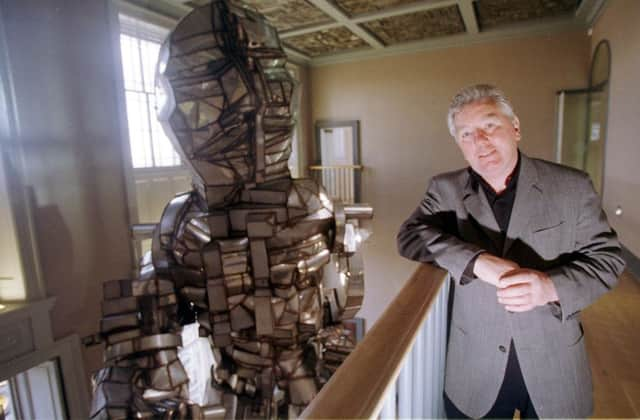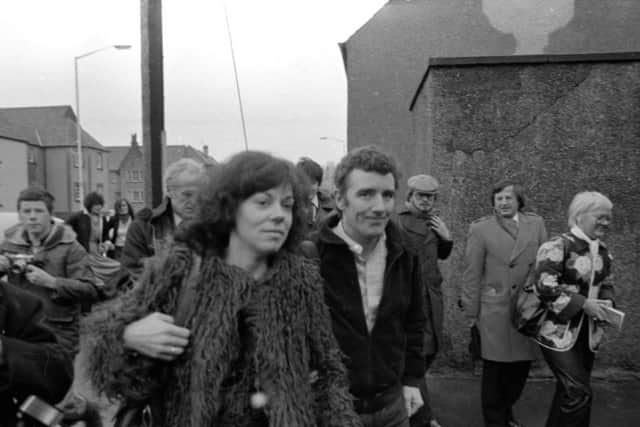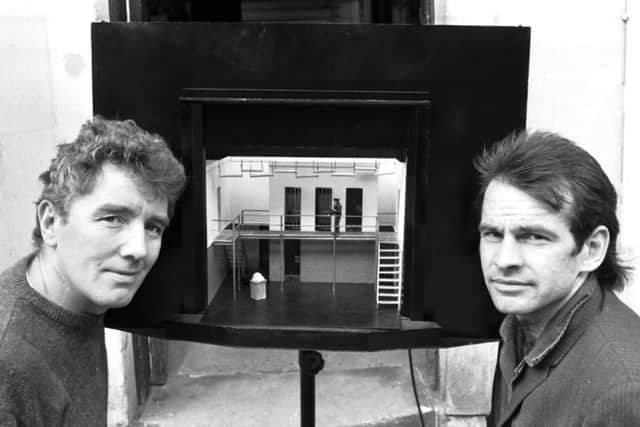How Jimmy Boyle went from violent gangster to leading artist


He was just 23 when he was sentenced to 15 years for stabbing William ‘Babs’ Rooney at a house party. His subsequent behaviour behind bars saw him branded “Scotland’s most violent man” by the press.
But by the time Boyle was paroled in 1982, he was a new man - a bestselling author and a critically acclaimed artist.
Advertisement
Hide AdAdvertisement
Hide AdHe was also married. The Gorbals-born criminal wed Sara Trevelyan, a privately-educated psychiatrist from a respectable London family, while on day release at Balfron Registry Office in January 1980.


Now Trevelyan has recalled her life with Boyle in a new book, Freedom Found: A Memoir, which describes meeting the artist while he was still incarcerated at Barlinnie jail in Glasgow.
They consummated their relationship in the prison and soon made plans to marry.
“It was very sudden and unexpected and totally not what I was looking for,” she told the Sunday Times.
“His situation intensified and amplified all these feelings.”


The couple moved to Edinburgh upon his release from prison, founding the Gateway Exchange Trust to help HIV patients, drug-related charities and disadvantaged children.
Boyle also continued to write, sculpt and stage plays - a world removed from his tough upbringing.
Violent criminal
Advertisement
Hide AdAdvertisement
Hide AdBoyle was born in 1944 in the Gorbals, the district to the south of Glasgow city centre and one of the most notorious slums in Britain. His father was a well-known local character and convicted robber who died in his 30s.


Boyle became involved in crime from an early age, being sent to approved schools and borstal before ending up prison.
He was charged with murder three times, standing trial for murder twice in 1965 alone. On the first occasion he was found not guilty and on the second the charges were dropped.
But in 1967 he was sentenced to 15 years after being found guilty of murdering Rooney. Boyle was said to have stabbed the petty crook to death during a party, but he has always denied being the man responsible.
Just two months after being jailed, he was accused of serious assault on the assistant governor of Barlinnie, breaking a bone in his face. He received an additional 18 months.


Then in October 1968 he was found guilty of assaults on two Peterhead prison officers and four more years were added to his sentence. June 1970 saw him take part in the riot at Inverness’ Porterfield jail, and assaulting two prison officers and the governor. Six months were added to his jail term.
In May 1973, he assaulted prison officers in Porterfield. One man lost his eye and Boyle received six more years.
Artist in the making
Advertisement
Hide AdAdvertisement
Hide AdBoyle became one of the first prisoners at the newly-opened Special Unit at Barlinnie, designed to deal with the most troublesome of prisoners in the Scottish penal system.
The unit was the idea of senior prison officer Ken Murray and civil servant Alex Stephen. Its opening was controversial, but the pair argued there had to be a better way of dealing with “uncontrollable” prisoners than simply locking them up in isolation.
The new regime proved to be the making of Boyle. He was introduced to art classes and soon found solace in sculpting and writing.
His autobiography, A Sense of Freedom, was published in 1977. He described his life sentence as beginning “as soon as he left his mother’s womb”, and detailed the alleged punishment beatings he regularly received in his early days as a prisoner.
An exhibition of his sculpture was held in 1979 at the MacRobert arts centre at the University of Stirling and critical acclaim followed.
Boyle eventually walked free from prison in 1982 and into the arms of his new wife Sarah.
By then, A Sense of Freedom had been adapted as a television play, with David Hayman playing Boyle. The Scottish prison service refused to allow its premises to be used as backdrops.
Life in France
Advertisement
Hide AdAdvertisement
Hide AdBoyle and Trevelyan separated in 2001 and the artist left the family home in Edinburgh’s desirable Inverleith district and relocated to France.
“I don’t like Scotland. I don’t like the weather and I don’t like the fact that I’m judged on my past rather than my present and future,” he said in an interview in 2002.
“I don’t talk about my past any more - I’ve moved on from that - but it seems that people in Scotland haven’t, and it all gets blown out of perspective and gets clouded here.
“I like France because I get anonymity there, which gives me the sort of privacy I would never have in Scotland.
“My wife and I have split up and that means in France I’m free to find a new girlfriend without hundreds of people knowing or caring about it.”
Boyle now divides his time between France and Morocco, where he continues to produce artworks.
The Barlinnie special unit was closed in 1995.